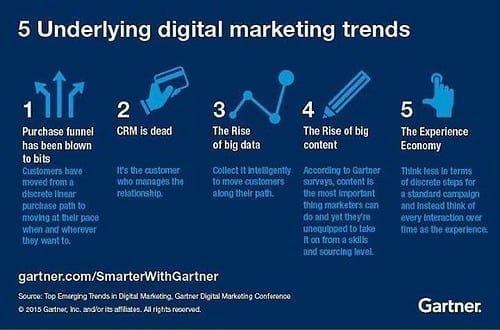How Digital Marketing Changed Consumer Behaviour Forever
The rise of digitisation and the power of social media is changing the way consumers interact with digital marketing efforts. Today, consumers are more aware of what goes on behind the scenes of digital marketing. Read on to find out how consumer behaviour has adapted to this change.
What’s Changed? Digital vs. Traditional Marketing

Gone are the days where marketing was restricted to the ‘Four Ps’ and consumers looked to their televisions and newspapers to consume marketing content. Today, new trends in digital marketing mean that consumers have access to more customer networks. These offer more in terms of engagement and interaction with brands. On the other hand, digitisation offers marketers a broader reach than traditional marketing. Indeed, virtually anyone can be your audience, once they have access to the internet.
This sounds great, right? Digital marketers can access their audiences with more ease than ever before.
However, consumer behaviour is shifting as a result. Be aware of this change.
A Peak Behind the Curtain of Digital Marketing
Be aware that consumers are more sceptical than ever about digital marketing practices.
The introduction of Google Chrome Ad Block in 2018 emphasised how consumers were fed up with intrusive ads. In light of this, how should digital marketers respond? Find the balance between effective targeting and retaining trust.
Digital Marketing and The Social Dilemma
In 2020 Netflix released its documentary ‘The Social Dilemma’. It focuses on how large social media companies manipulate their users by encouraging addiction to their platforms. The documentary educated millions of people, and as a result led to a behaviour change. Consequently, many people reportedly took breaks from social media following the documentary.

There are three key dilemmas addressed in the documentary:
The Mental Health Dilemma
The Democracy Dilemma
The Discrimination Dilemma
Accordingly, consumers are more aware than ever of these negative consequences of social media and digital marketing.
Find out more about The Social Dilemma here.
Participatory Culture in Digital Marketing

Social media makes it easier for consumers to assess the intentions of digital marketing – by creating a participatory culture. Significantly, consumers can create and be a part of networks of like-minded individuals where knowledge and opinions are shared.
Consumers are used to being able to engage with brands. Hence, digital marketing efforts must reflect this. Take advantage of this participatory culture.
So, What Should Digital Marketers Do?
1. Create Trust
Undoubtedly, consumers value trust. Treat consumer’s data with respect. Breaking this trust is detrimental to any brand’s reputation. To demonstrate, think of any recent PR scandal. For instance, Pepsi went into crisis recovery mode when an ad featuring Kendall Jenner was deemed tasteless.
2. Be Transparent
Secondly, transparency is key to foster trust. Consumers are better at identifying when brands are being misleading – so be transparent. Furthermore, digital marketing is becoming more regulated. Commit to this transparency or risk legislative consequences. Take GDPR for example. Comply with GDPR to avoid fines.
3. Engage Consumers
Finally, participatory culture means that consumers hold more power than ever before. Therefore, engage with them. Social media creates the perfect tool to do this. With this in mind, take advantage of it.
In summary, consumers are more aware than ever of how digital marketing works. As a result, digital marketers must keep these three criteria in mind in their marketing efforts. If you wish to take advantage of consumer behaviour trends – be trustworthy, transparent, and engaging.
Read more about the latest digital marketing trends here.





Recent Comments